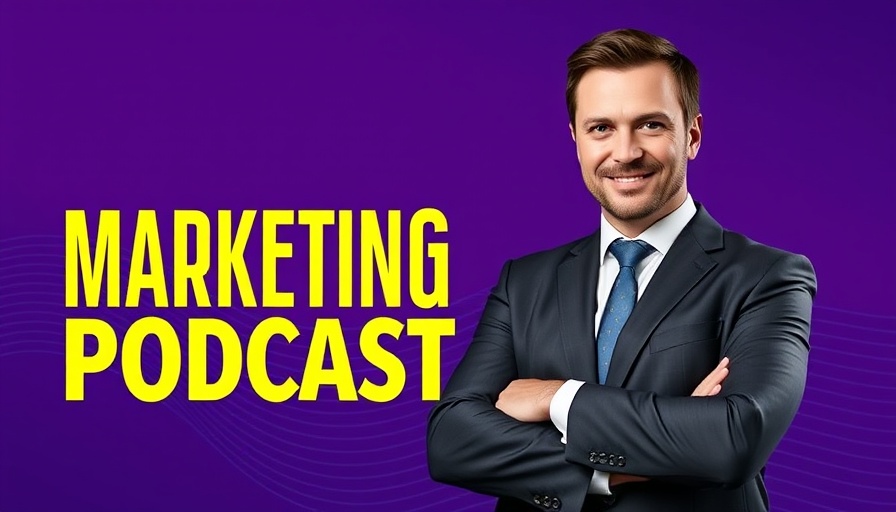
Understanding B2B Thought Leadership: A Game Changer for SMEs
Thought leadership is not just a buzzword; in the B2B landscape, it’s a pivotal part of marketing strategy, especially for small and medium-sized enterprises (SMEs). Engaging content can fuel a company’s growth, nurture client relationships, and enhance market presence. This is underscored by the insights from Cindy Anderson, the Chief Marketing Officer for IBM’s Institute for Business Value.
Anderson recently noted that a staggering $265 billion in purchases are made globally because of executives consuming thought leadership. This highlights not only the importance of constant, original content but the effect it has on executive buying decisions—87% of which were influenced by thought leadership in the last quarter alone. As SMEs seek to carve their niche amidst larger competitors, understanding how to leverage thought leadership is vital.
Charting a Course: The Key Traits of Effective Thought Leadership
Engaging thought leadership is characterized by three main traits presented by Anderson: data, expertise, and a commitment to being independent from commercial messaging. This delineation is crucial for SMEs that often struggle to differentiate themselves in a crowded market. By focusing heavily on relevant data-driven insights, SMEs can establish credibility and trust among their potential clients.
Rethinking Marketing Tactics: Why Thought Leadership Should Be Central
Anderson describes thought leadership as the ‘8th P’ of marketing. It complements traditional elements like product, price, promotion, place, people, processes, and physical evidence. In that way, it can serve as a foundation upon which other marketing initiatives can build. Using a 'hub-and-spoke' model allows organizations to derive various content formats from one core idea—thus amplifying their message.
Additionally, employing original research enhances trust, especially within the context of AI technologies which are becoming ubiquitous in the B2B field. Thought leadership content should not just be a reiteration of industry trends; it needs to pose intriguing perspectives and provoke thought.
Impacts of AI and Synthetic Data on B2B Content
As AI becomes more prevalent, its application in thought leadership content cannot be overlooked. Anderson underscores the growing role of synthetic AI-generated data in producing niche research. However, misusing such data might erode the credibility that is essential for effective thought leadership. Businesses should tread carefully, ensuring their content is both innovative and trustworthy.
Navigating the Post-Pandemic Landscape: Trends to Watch
A crossover of insights from recent studies suggests that many decision-makers feel overwhelmed by the sheer volume of thought leadership available in the market today. 66% of those surveyed reported that they were inundated with content during the pandemic, but only 29% found that it adds considerable value to their decision-making process.
This disconnect presents a significant opportunity for those SMEs willing to invest the time in understanding their audience’s specific needs and pain points, enabling them to produce tailored content that resonates. Topics such as sustainability and navigating economic challenges are becoming increasingly relevant. With B2B buyers placing a premium on thought leadership that speaks to immediate challenges, companies must act swiftly to adapt their strategies.
Measuring ROI from Thought Leadership Initiatives
For SMEs looking to quantify their thought leadership impact, it’s essential to define success metrics clearly. The triangulation of engagement metrics (like shares and comments), conversion rates, and overall sales can provide a holistic view of how thought leadership efforts are performing.
Rich, engaging content in the form of whitepapers, webinars, or podcasts can transform a simple marketing strategy into a conversation starter with potential clients. Remember, the goal is not just to create content but to establish a connection that builds trust and fosters relationships.
Conclusion: Actionable Insights for B2B Businesses
As discussed, elevating your B2B brand through thoughtful and strategic content is no longer optional. SMEs must embrace thought leadership not merely as an advertising tool but as a genuine platform to engage and influence. Whether you're focused on navigating complexities or leveraging AI trends, the road to strong thought leadership requires commitment, research, and a willingness to share knowledge openly. Explore how your organization can begin implementing these initiatives today, and start witnessing the ROI of your efforts!
 Add Row
Add Row  Add
Add 



Write A Comment